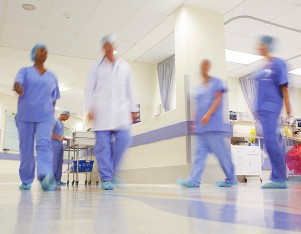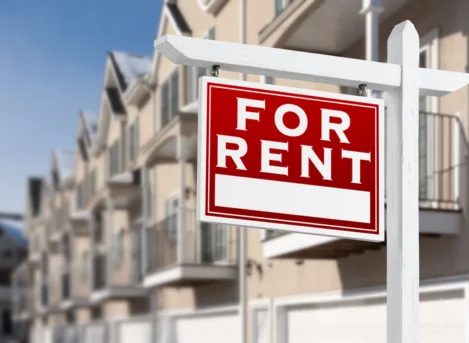The world of health care has always been ever-changing. Coupled with the COVID-19 pandemic, it can be difficult for providers to stay abreast of the numerous regulatory changes. Recently, the Rhode Island Department of Health (“RIDOH”) issued updated guidance (the “Guidance”) for COVID-19 policies in Nursing Facilities. The recent guidance incorporates recommendations set forth in the September 23, 2022 guidance issued by the Centers for Disease Control and Prevention (“CDC”) and Centers for Medicare & Medicaid Services (“CMS”).[1] The Guidance includes updates to isolation, testing, and visitation practices, as well as source control, universal Personal Protective Equipment (“PPE”), and vaccination requirements for residents and Health Care Professionals (“HCPs”) alike.
Of note, all health care settings, including nursing facilities, should continue to use the statewide community transmission rate to guide their decisions about what extra precautions related to infection and control practices should be undertaken.[2] RIDOH recommends, and often requires, increased precaution when or if the community transmission is “high,” equating to transmission rate equal to or exceeding 100/100,000 people or outbreaks.
Isolation in Nursing Facilities
The Guidance categorizes the isolation following COVID exposure and/or symptoms depending on the degree of illness of the resident.[3] Regardless, RIDOH recommends isolation begins on the first day of symptoms or on the day of a positive test if there are no symptoms.
- Residents with mild to moderate illness isolate:
- At least 10 full days since symptoms first appeared/date of the first positive test and
- Fever-free for 24 hours without fever-reducing medications and
- Symptoms have improved.
- Residents with severe to critical illness isolate:
- At least 10 full days and up to 20 days since symptoms first appeared and
- Fever-free for 24 hours without fever-reducing medications and
- Symptoms have improved.
Similarly, the Guidance provides information regarding work restrictions for COVID-19-positive HCP by Facility staffing capacity levels.[4]
- When operating at conventional staffing level, HCPs with mild to moderate symptoms, should isolate for 10 full days or isolate for at least 7 full days with a negative test within 48 hours before returning to work (day 5 or later) and fever free for 24 hours with improved symptoms. When asymptomatic, HCP should continue to isolate for 10 days or isolate 7 full days with a negative test within 48 hours before returning to work (day 5 or later).
- When operating at a contingency level, HCPs with mild to moderate symptoms should isolate for at least 5 full days and be fever free for 24 hours as well as display improved symptoms.[5]
- When operating at a crisis staffing level, HCP displaying mild to moderate symptoms should isolate for at least 5 full days and be fever free for 24 hours with improved symptoms. For asymptomatic HCP at this level, the Guidance calls for isolation for at least 5 full days since the date of their first test.
- When at a crisis staffing level, HCP and the Facility where they are employed should notify RIDOH and review the latest CDC recommendations for prioritization of personnel.
- HCP who display severe to critical symptoms, regardless of staffing levels, should isolate for at least 10 full days and up to 20 days since symptoms first appeared and should be fever free for 24 hours.
RIDOH also recommends the implementation of empiric transmission-based precautions to mitigate COVID-19 transmission. This form of precaution should be used in addition to standard precautions while awaiting a clear diagnosis for potentially exposed residents. For those residents who are symptomatic, quarantine and use source control around others until diagnostic testing is completed. Empiric testing and source control should continue until a resident receives a negative COVID-19 test or at least two negative test results from consecutive tests if utilizing antigen testing.
Testing For COVID-19 in Nursing Facilities
Nursing facilities should continue to base decisions regarding testing on CDC and CMS guidance. However, general testing triggers remain in place, including:
- When a symptomatic individual is identified, all staff and residents with signs or symptoms of COVID-19 must be tested, regardless of vaccination status.
- When a COVID-19-positive staff or resident is newly identified in a facility
that can identify close contacts, test all staff and residents who had a close contact or higher-risk exposure with a COVID-19-positive individual, regardless of vaccination status. - When a COVID-19-positive staff or resident is newly identified in a facility
that is unable to identify close contacts, test all staff and residents facility-wide or at a group level (e.g., unit, floor, or other specific areas of the facility), regardless of vaccination status.
Source Control and PPE in Nursing Facilities
Nursing facilities should continue to use source control for everyone in areas of patient care when Community Transmission levels are considered high. Facilities may offer masks as a source control option for visitors but should allow the use of a mask or respirator, with higher level protection. Source control for HCP includes National Institute for Occupational Safety & Health (“NIOSH”) approved particulate respirator with N95 filters or higher, Respirator approved under standards used in other countries that are similar to NIOSH-approved N95 filtering facepiece respirators, barrier face covering that meets ASTM F3502-21 requirements, and well-fitting facemasks. Facilities should continue to implement broad use of respirators and eye protection by HCP during patient care encounters when community transmission is high.
Importantly, Rhode Island regulations remain in place requiring health care workers or assisted living residence workers be up to date with their COVID-19 vaccines, meaning a person has received all recommended doses of COVID-19—including a booster dose when eligible—or wear a NIOSH-approved N95 mask while working in health care facilities during a period in which the COVID-19 prevalence rate in the State is greater than or equal to 50 cases per 100,000 people per week.
[1] A copy of the Guidance can be found here https://health.ri.gov/publications/guidance/COVID-19-Guidance-Nursing-Homes.pdf.
[2] Rhode Island’s community transmission rate can be found here https://rhode-island-covid-19-congregate-care-rihealth.hub.arcgis.com/.
[3] The following is an overview of key aspects of the Guidance. Facilities are encouraged to review the Guidance for a comprehensive understanding of best practices.
[4] Work restrictions for HCP who may be immune-compromised varies from the restrictions reviewed here.
[5] Contingency staffing means staffing shortages are anticipated at health care facilities







